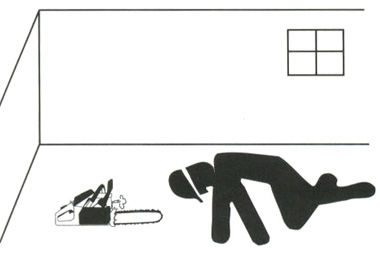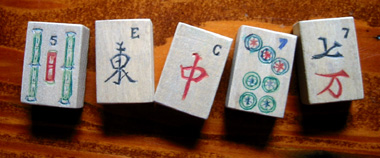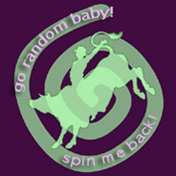Imagine this:
You are on a luxurious cruise liner in the South Pacific (not one of those tacky floating pubs full of bloated tourists in loud Hawaiian shirts – I’m talking 1920s-chandeliers-and-monogrammed-crockery type affairs. Only A1 class analogies here at TCA). A waiter pours you a shot of vodka, but before you even get to take a sip, a careless socialite waltzing across the deck with her dashing lover bumps you, and you drop the shotglass into the ocean. The ship sails on. When you reach port two weeks later, you tell your amusing lost-vodka story to an acquaintance and they say: “Don’t worry, just take a shot glass, go down to the ocean and scoop up some sea water. If you drink it, it will still have the same effect!”
Are you with me? Are you thinking what I’m thinking? You would say to them: “You are a CRAZY FUCKING LUNATIC. No way will it have the same effect!”
If they insisted that it would, then you know that they are into homeopathy, one of the daftest belief systems to have originated this side of Scientology.
(Actually, the analogy I gave above is exaggerated. The usual homeopathic ‘remedy’ has even less ‘active’ material than the amount of your spilt vodka in the entire volume of water of all the oceans on the planet. Seriously.)
It’s hard to know where to start in picking on homeopathy. It’s like shooting a very fat fish in a very small barrel.
A brief lesson in how it is supposed to work (for anyone who’s been on a Pacific island for the last seventy years and thinks the war is still on):
1: You acquire a substance that is meant to have some kind of prophylactic effect.
2: You then dilute it with distilled water so much that there is, in many cases, literally none of the original substance in the remaining liquid.
3: You then swallow it according to a variety of regimes, none of which need concern us here because the preceding two steps have enough nonsense to sink a ship (just riffing on the original Luxury Liner analogy).
In recent times, homeopaths have had to agree (mainly because it is unarguable) that a typical homeopathic remedy contains none of the supposed active original substance. But lately, because they really need to defend a couple of centuries of investment in an increasingly shaky belief system, advocates of homeopathy have come up with a new idea; that even though the original ingredients have been diluted out of existence, the water somehow remembers what was dissolved in it. This concept has come to have been rather surprisingly called ‘Water Memory’. Let me give you a potted explanation of this (stick with me – there’s a lot of willing suspension of disbelief involved): You take a small amount of a substance. You dissolve it in purified water, say, at a ratio of 100:1. Now you do this again, with your 100:1 solution, and you do it again and again and again. Many times. Many, many times. So many times that there is possibly, even probably, no molecule of the original substance left in the water (I’m not making this up). In fact, homeopaths assert that the more times you dilute it, the more effective it is. You simply can’t dilute it too much*. But this is totally OK, because even though there is no remnant of the original substance in the water, it somehow†leaves some kind of ‘imprint’ on the water. This final solution (you may as well call it water, because it is), is the thing that is meant to cure your ills.
I don’t know about you but I when I hear stuff like this I get the urge to do something like staple my hand to a table just to make sure I’m awake.
Thing is, the concept caught the fancy of a few scientists who have a bit more tolerance for loonies than I have, and who quite scientifically thought “Why not test this assertion? It should be easily verifiable in a controlled experiment!” Consequently, lots of non-conclusive experiments have been performed over the last few years. The jury is still out on ‘water memory’ largely because no-one has managed to do a proper double blind experiment on it, but if I was a gambling man, I know where I’d place my life savings.‡
The real mistake these diligent scientists made, though, was that they didn’t consider the whole question. They tried for “Does water have a memory?” but completely missed “What are the original substances that homeopaths choose to dissolve in water, why are they deemed to be effective, and who decided that?”. The scientists fell for a classic magician’s smoke-and-mirrors distraction: they tackled the part of the theory that was mysterious and missed the bit that was just plain deception. But by giving credence at all to a small part of the idea, they lent weight to the entire spurious argument that is homeopathy.
To answer those last three important questions (and I emphasise, these are the things you should really consider if you are even contemplating using a homeopathic treatment): Homeopathy was invented in 1796 by a physician named Samuel Hahnemann and uses an archaic belief system traceable back to the original alchemists, called The Law of Similars. The Law of Similars is basically medieval superstitious thinking that says if you have, say, a stomach pain, then it should be treated by, maybe a pig’s intestine because pigs have a good constitution and hardly ever get sick (!) Or something like that. Truly, it’s that nutty. There is pretty much no rational reasoning, let alone science, involved. Hardly anyone I know who uses homeopathic medicines seems to realise this.‡‡
Let me leave you with one last thought: If homeopathy is a valid concept, then you should beware every glass of water you ever drink. Because, according to the laws of homeopathic ultradilution, every cure and every cause for every illness ever known to humankind has over the millennia passed through, and is ‘remembered’ by, that glass of water. Feel a bit queasy?
Me? I stick with single malt whisky. And I believe in Santa Claus because he’s comparatively plausible.
*There are further aberrant behaviours involved, such as ‘striking’ or ‘tapping’ the container with the final dilution ten times to ‘potentize’ (ugh, even the language is ugly) it to ‘make it more effective’, but I’ve left these out because, well, it’s hard enough to believe this shit even without including them.
†No one has even mooted a mechanism for how this might work. Unsurprisingly.
‡Even generously allowing the benefit of the doubt in favour of homeopathy that there is some kind of effect it must be staggeringly small. In the order of success of about one in a million treatments. This is hardly something you’d want to stake your health on.
‡‡A great thing about The Law of Similars is that in some cases, the ‘cure’ is the disease itself, such as a rabid dog’s saliva being used to cure rabies. But that’s OK, because it’s diluted so much, it isn’t there. Oh, I just can’t go on. Even writing about it is just absurd.







